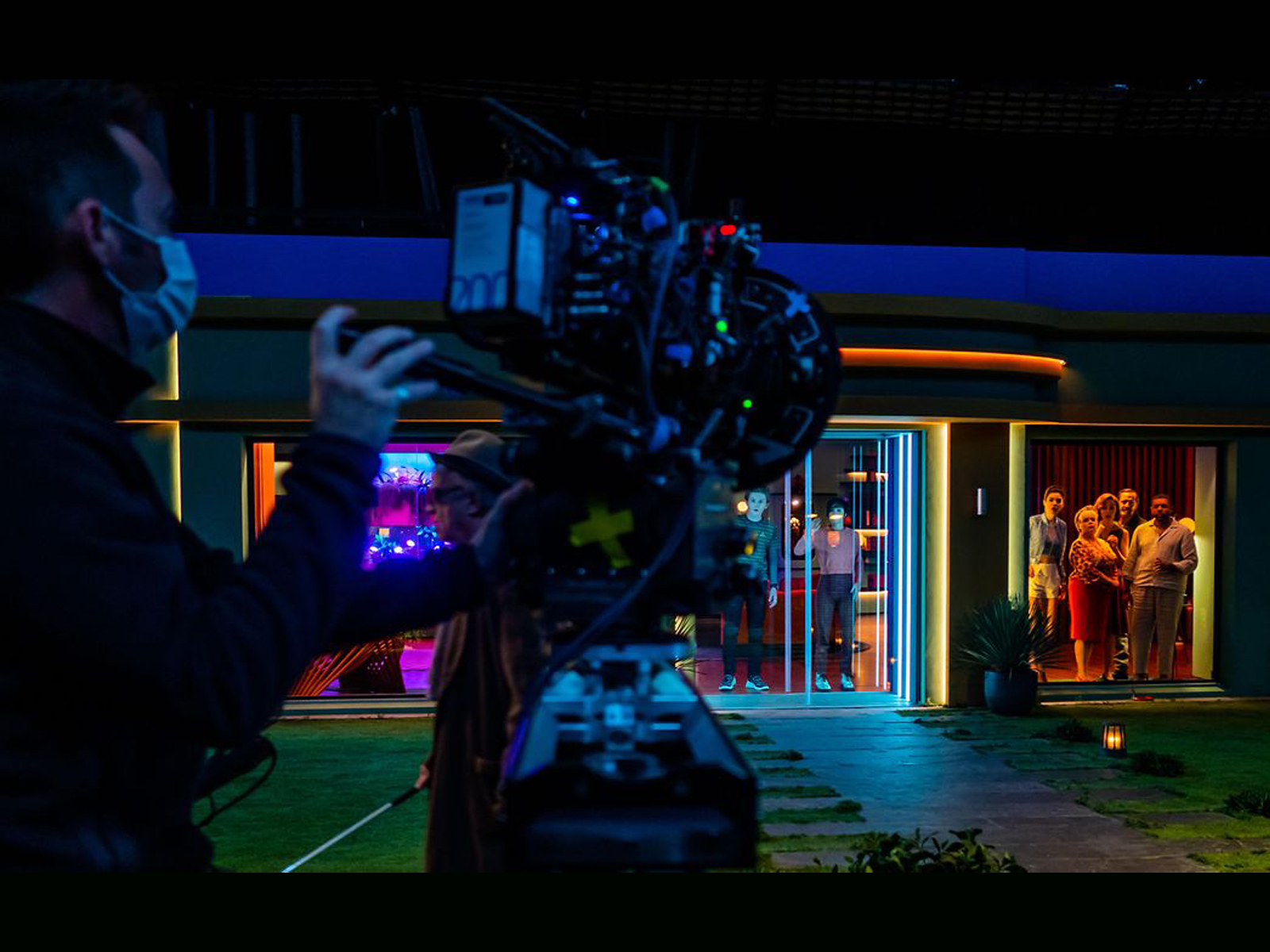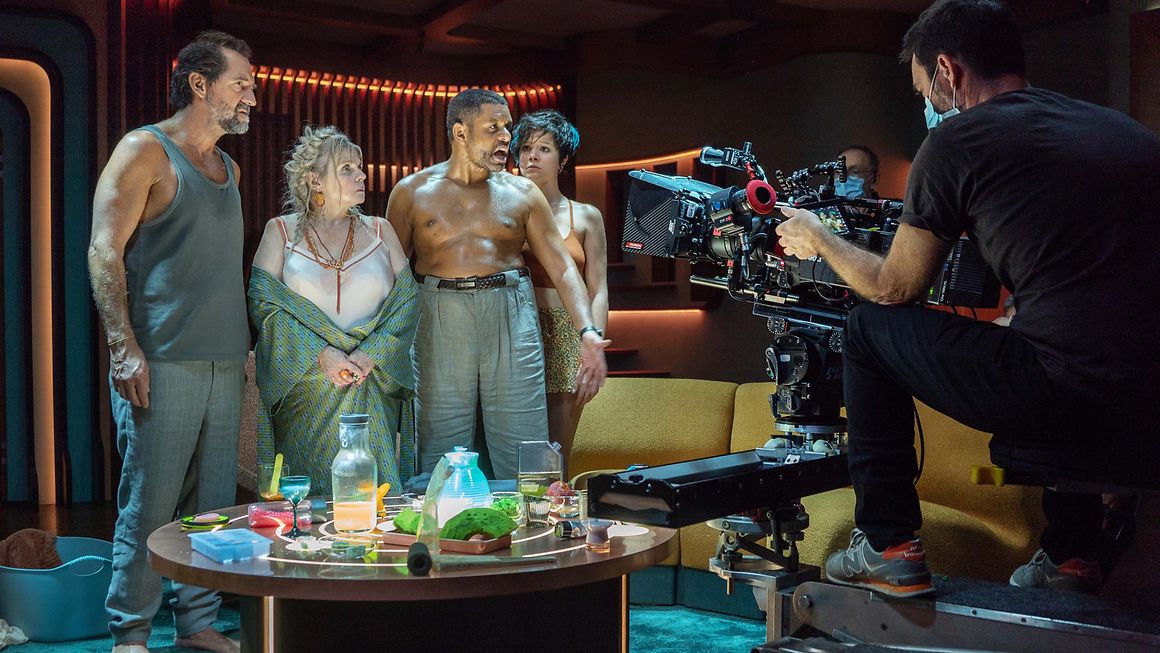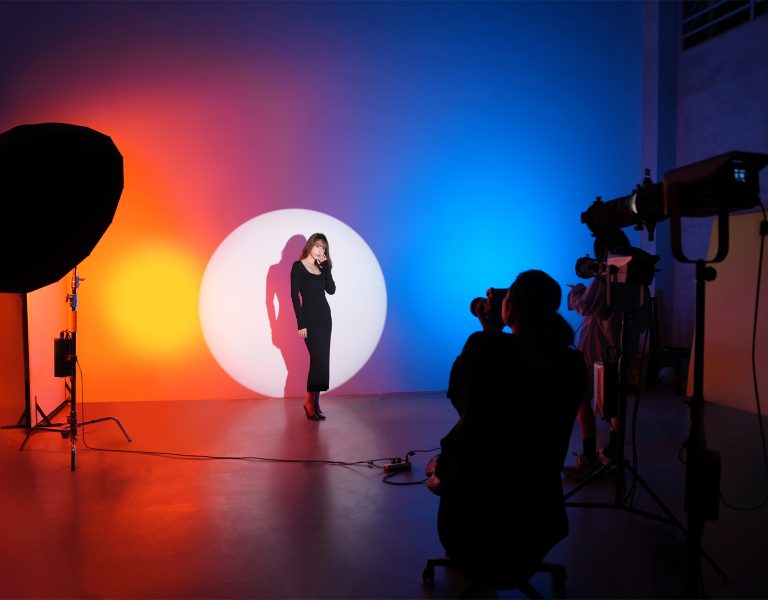
DP Thomas Hardmeier and gaffer Laurent Héritier talk about their experience with the ALEXA LF, ALEXA Mini LF, ARRI Signature Primes, and SkyPanels on Jean-Pierre Jeunet’s Bigbug for Netflix.
Eight years after winning the César for best photography for “The extravagant journey of the young and prodigious T.S. Spivet,” Thomas Hardmeier meets Jean-Pierre Jeunet again for Bigbug, his new feature film produced by Netflix. In the interview, Hardmeier talks about the comfort of working with ARRI equipment: The shoot was entirely done in the Bry-sur-Marne studio, for which the cinematographer chose the ALEXA LF, ALEXA Mini LF, and ARRI Signature Prime lenses. In a second interview, gaffer Laurent Héritier talks about his contribution to “Bigbug”, using 125 SkyPanels for the “most beautiful lighting installation” of his entire career.

Mr. Hardmeier, it’s the second time that you shoot with Jean-Pierre Jeunet. Did he have any particular requests for the shooting of Bigbug?
It’s been almost four years since he told me about this project, which was difficult to put together as a feature for cinema. It’s a science-fiction comedy in the style of Jeunet, with confrontational humans and robots in a suburban house in 2050. Since we were shooting in a studio in a single set, he wanted a lighted ceiling to speed up the lighting set-up and allow more time for directing. I therefore worked very closely with Aline Bonetto, the production designer, who did an extraordinary job to find technical and aesthetic solutions.
What solutions did you implement for lighting?
I know from experience that Jean-Pierre likes to have warm tones in the image. He didn’t want to make a film with the usual cold colours of science fiction. For the lighting, we had the ceiling as a basis, lit by 93 SkyPanel S60s, and, with Aline Bonetto, we integrated a lot of other LEDs in the set, whether they were LED ribbons or flexible plates. This allowed me to structure the backgrounds. Then, to avoid being monochrome, I played with the colour of these different sources: green, blue, yellow, fuchsia, etc. Any excuse was good for me to create colour contrasts in the image. A week before the start of the shoot, Jean-Pierre and I conducted tests with the actors in costume and on set, in order to work in detail on the tints, the lights, and to create predefined atmospheres. All the LEDs, including the SkyPanels and the game lights, were adjustable from a console. It was great! I could control everything remotely and see the results right away. It was very intuitive. It freed up a lot of creativity for me and Jean-Pierre.

Why did you choose the ALEXA LF and the ALEXA Mini LF to shoot Bigbug?
I wanted to shoot the film in large format. At first I thought about using the ALEXA 65, but Jean-Pierre Jeunet likes to shoot in short focal length, with the actors in the foreground and a lot of depth of field. Since I only shoot with ALEXA, I chose to work with the ALEXA LF. On set, we had an ALEXA LF on a dolly and an ALEXA Mini LF on Steadicam, with Geoffroy Saint-Hilaire operating. We used both camera bodies interchangeably. For me, the ALEXA LF is a direct continuation of the classic ALEXA. It brings a real comfort of work when we are in the frame and it offers many accessory options. As far as the image is concerned, if I want to get information in the dark, there is clearly only the ALEXA. Not to mention its soft rendering and wide exposure latitude. All this is found in the ALEXA LF. Moreover, working in large format allowed me to gain focal length ratios. Most of the time, Jean-Pierre Jeunet works with 18 or 21 mm in S-35 mm, never with long focal lengths. A large part of Bigbug is shot at 25 mm, but thanks to the large format of the ALEXA LF, it looks like 16 mm, but without any distortion. It was the perfect camera for Bigbug.

In terms of optics, what did you think of the ARRI Signature Primes?
For me, the ARRI Signature Primes are a direct continuation of the Master Prime, but adapted to 4K. They are very sharp and it is the kind of image that Jean-Pierre Jeunet likes in his films. I did some testing though. I compared the ARRI Signature Primes with other large format lenses. The ARRI series was the only one to be perfectly sharp and to offer me the best minimum point. I shot Bigbug with a 5.6 or 8 stop to get the maximum depth of field while having the characters in focus in the foreground. To gain an extra stop, I exposed the ALEXA LF at 2000 ASA.

What are the advantages of HDR?
In post-production, we graded Bigbug in HDR, but also made a version in SDR. The advantage of HDR is the greater latitude it offers at the image level. In particular, it allowed us to preserve more details in the highlights. On this film we had a lot of practicals in the field. For this reason, we slightly dimmed the HDR effect, so as not to be too distracted by those highlights that would have become too strong in the image.

How was working with Netflix?
Very good. We had total freedom on Bigbug. For the last two years, it just so happened that I have been working a lot with them on multiple projects. Netflix gives the directors and crews the means to work well, and they are very concerned about making sure everything goes well on the shoot.
Interview with gaffer Laurent Héritier on illuminating Bigbug

Lighting the large set of Bigbug on the 1,085 square meter B5 stage at the Studios de Bry-sur-Marne was no small task. In total, the lighting team used nearly 250 different light sources. How did you manage?
It’s the most beautiful lighting installation I’ve ever done in my career. It was a very complex job, especially in terms of DMX control. There were 125 SkyPanels installed on top of each other to ensure the lighting of the set, which consisted of a house with a garden and a street with a blue background. In addition, there were all the LEDs integrated into the set. It’s a film where Thomas played a lot on the coloured contrasts. He started with the principle that light is decor.
How did ARRI SkyPanels come into play?
I used the SkyPanels in 16 bits because we had colour changes in the shot, for example from turquoise to fuchsia pink. The 16 bits soften the colour variations. The 250 sources were controlled by a GrandMA2 console using the RDM protocol, which allows a two-way dialogue with the fixtures. The RDM was also very useful for making remote software updates on the SkyPanels installed above the ceiling, which were difficult to access. In total, we had 24 DMX universes programmed on the console. The SkyPanels were an artistic choice of Thomas Hardmeier and Jean-Pierre Jeunet because Bigbug is a very colourful movie and the SkyPanels are very reliable and very stable in colour. When I changed the intensity or colour on the 93 SkyPanels that lit the interior of the house, I was confident they would all react exactly the same.

Were there any special challenges when lighting “Bigbug”?
You have to understand that on Bigbug the story unfolds continuously over 28 hours. We go from morning light to afternoon, then to early evening and night, finishing at dawn. The challenge for Thomas was to bring this closed-door setting to life, so that the viewer could see time passing. For the exterior of the house, we installed two HMI 18K ARRIMAX on a bridge that we could roll wherever we wanted. This gave us daytime sun on the street and the garden. We also had an ARRIMAX 18K that brought the light into the living room. Also outside the house, I set up a large 30 m x 2.2 m softbox, with sixteen SkyPanel S60s and nine Lux LEDs. We also had three SkyPanel S360s on an overhead crane that were moved from right to left depending on the time of day, in addition to the intensity settings. Finally, we built a huge softbox of 30 m x 14 m, with 22 SkyPanels in shower and double diffusion to get the hyper soft light of the dawn.
You have been Thomas Hardmeier’s resident lighting director since 2002 and are aware of his style.
Thomas really likes to create a very velvety light. This requires layers and layers of diffusion and the use of honeycombs that diffuse and direct the light. He is someone who works with light on many levels, where everything is perfectly controlled.
Bigbug is now streaming on Netflix.












